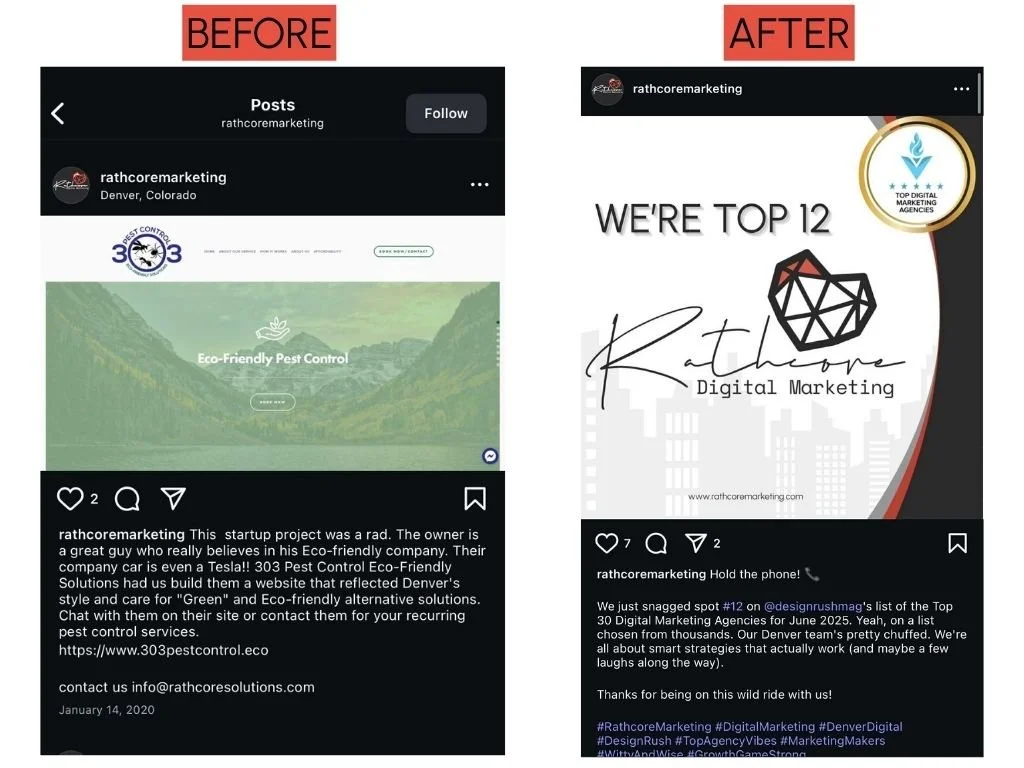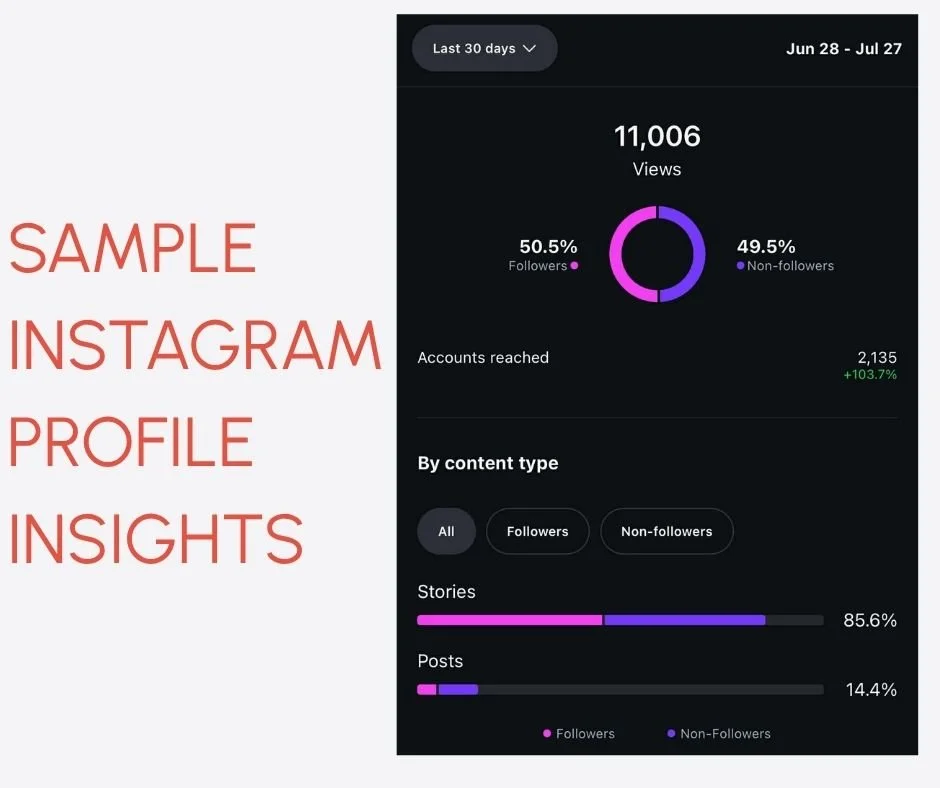Your Instagram Posts Are Now Google’s Playground: What to Know About the New Instagram SEO Update
In the ever-evolving world of digital marketing, staying on top of platform updates isn't just a good idea; it's essential for survival. This is especially true when a platform as influential as Instagram makes a change that fundamentally alters its relationship with the world's largest search engine. If you've been using Instagram for your business or as a creator, get ready to re-evaluate your entire strategy. There's a new Instagram update that has quietly taken the digital marketing world by storm, and it has profound implications for how your content is found.
The news is simple, yet monumental: As of July 10, 2025, public professional Instagram content, including posts, Reels, and videos, can now be indexed by Google Search. You heard that right. Your carefully crafted visuals and witty captions are no longer confined to the app itself. They are now officially part of Google’s vast, searchable index. This isn’t just a simple feature tweak; it’s a seismic shift that turns Instagram from a purely social platform into a powerful search engine optimization (SEO) tool.
For small business owners, content creators, and social media managers who are always looking for ways to expand their reach, this is an incredible opportunity. It means the effort you put into your content can now pay dividends far beyond your follower count. This article will break down exactly what this update means, what you need to do to take advantage of it, and how to effectively optimize your Instagram Google search strategy. For a broader perspective on how to integrate this into your overall business presence, consider building a more robust digital marketing strategy.
What Exactly Changed? The Technical Side of the Update
The update is a direct result of a deeper partnership between Meta and Google, aimed at improving content discoverability. Before this change, the only way for your Instagram content to show up on Google search was through third-party indexing services or very specific, brand-name searches. But with this new update on IG, the process is now native and automatic for public professional accounts. The details of this can be found on the official Instagram update page.
Here’s a more granular look at the mechanics:
Who is affected? This change primarily impacts public professional accounts, both Business and Creator profiles. Private accounts and personal profiles that are not set to public are not affected by this.
What content is indexed? The update specifically targets a variety of public content types:
Individual photos and carousel posts.
Videos and Reels.
What about older content? The initial rollout focuses on content created from January 1, 2020, onward. This means even your older, high-performing content could see a new life in search results.
Can I opt out? Yes, you can. Instagram provides a setting within your professional account dashboard that allows you to opt out of having your content included in Google search Instagram results. However, for most businesses and creators, this would be counterproductive, as the goal is to increase visibility.
This update of Instagram represents a major step forward in bridging the gap between social media and traditional search engines. It effectively makes a portion of Instagram a new type of Instagram search engine for Google, giving it more relevant and up-to-date visual content.
The New Rules of Instagram SEO
You're probably used to optimizing your website or blog for search engines, but now you have to think about a different kind of SEO: Instagram SEO. The strategies are similar but tailored to the unique nature of the platform. If you're looking for professional help, our team offers comprehensive SEO services to help you navigate these changes. Here’s how you can start adapting your content strategy to this significant platform change.
1. Optimizing Your Profile: Your Digital Business Card
Think of your Instagram profile as the homepage for your brand on the platform. Google will consider it when evaluating the authority and relevance of your posts.
Keywords in Your Bio: Just like a website's meta description, your bio is crucial. Use relevant keywords that accurately describe what you do. If you're a "San Francisco wedding photographer," make sure that phrase (or a variation) is in your bio.
Username and Name: Your username and the "Name" field on your profile are highly searchable. Use these areas strategically to include a keyword related to your brand. For example, "Sarah | Vegan Baker."
Location Tagging: For local businesses, make sure your location is clearly stated. This helps you rank for "near me" type searches on Google.
2. Optimizing Your Content: Your SEO-Ready Posts
This is where the magic happens. Every piece of content you create now has the potential to be a powerful, searchable asset.
Captions as "Mini-Meta Descriptions": The caption is no longer just a place for an engaging story. It’s the primary text Google will use to understand your content. Think of it as a meta description for your post. Start your captions with a clear, keyword-rich sentence that describes the content of the image or video.
The Critical Importance of Alt Text: This is perhaps the most important SEO tip for Instagram. Alt text (alternative text) is a description of an image for visually impaired users, but Google also uses it to understand the image's content. Instagram allows you to add custom alt text to every post. Use this feature to write detailed, keyword-rich descriptions that accurately explain what's in the image. For example, instead of "a photo of food," write "A close-up shot of a healthy vegan burrito bowl with fresh avocado, quinoa, and black beans." This is the Instagram equivalent of a powerful meta tag.
Hashtags Aren't Just for Clicks: While hashtags are still useful for in-app discovery, they also serve a purpose for search engines. Use a mix of broad, niche, and highly specific hashtags. They help Google categorize your content and understand its topical relevance.
Subtitles for Video and Reels: Google is getting better at crawling video content. Adding subtitles or a transcript to your Reels and videos gives Google text to index, which greatly improves the chances of your content appearing in search results.
3. Content Strategy Shift
With this IG new update, your content strategy needs to evolve from a purely social approach to a more search-driven one.
Embrace Evergreen Content: Think about what people are searching for on Google. "How to bake sourdough," "best hiking trails near me," or "skincare routine for sensitive skin." Creating content that answers these questions will give you a significant advantage.
Educational and Informational Posts: While entertaining content is still important for engagement, educational posts and tutorials are more likely to perform well in Google Search results.
Optimize Your "Highlights": Your Highlights are a great place to store evergreen content. Consider making Highlights for different search queries, like "Our Products," "How-To's," or "FAQs."
This newest update for Instagram requires a shift in mindset. Instead of just trying to get likes and comments from your existing followers, you are now competing for a spot on the Google search results page. If you're looking for a partner to help with your overall digital presence, feel free to visit Rathcore Marketing's homepage.
How This Impacts Your Business
The implications of this update are vast and overwhelmingly positive for proactive businesses.
Increased Organic Reach: The most obvious benefit is the potential to reach an entirely new audience. A person searching for "best coffee shops in Seattle" could now see your well-optimized Instagram post in the search results, even if they don't follow you.
Content Longevity: The lifespan of an Instagram post used to be a matter of hours or days. Now, a well-optimized post can continue to drive traffic for weeks, months, or even years, much like a good blog post.
Cross-Platform Synergy: This update strengthens the connection between all your digital assets. Traffic from Google to your Instagram profile can then be directed to your website via the link in your bio, creating a powerful marketing funnel.
The Competitive Edge: Many businesses are still unaware of this change. By being an early adopter and implementing a smart SEO strategy, you can get a significant head start on your competition. This is particularly important for small businesses that rely on organic traffic to grow.
New Revenue Streams: The ability to be discovered via Google could lead to increased sales, more followers, and new partnership opportunities. For creators, this could mean attracting more brand deals and sponsorships.
In a world where attention is the most valuable commodity, having your content appear in multiple places, especially on Google, is a game-changer. The Instagram search experience is now intertwined with the global web.
Actionable Steps: What to Do Today
Now that you understand the what and the why, here's a checklist of what you should start doing immediately:
Audit Your Existing Content: Go back through your top-performing posts from the last year or two. Edit their captions and add detailed alt text to improve their chances of being indexed.
Conduct Keyword Research: Use tools to find out what your target audience is searching for. Then, create a content calendar that incorporates these keywords into your posts and Reels.
Update Your Social Media Team: If you work with a team, make sure everyone understands the importance of writing search-optimized captions, alt text, and using strategic hashtags.
Monitor Your Analytics: Keep an eye on your Instagram Insights and Google Search Console (if applicable) for new traffic sources. Look for referrals from Google to understand which of your posts are performing well in search.
Educate Your Audience: Consider creating content that explains this update to your audience. This not only builds trust but also shows your expertise.
The landscape is changing, and with this new Instagram update, we are seeing a true convergence of social media and search engines. It's time to stop thinking of them as two separate entities and start building a holistic, SEO-first content strategy. The future of your brand’s visibility might just depend on it.
Frequently Asked Questions (FAQ)
-
No, this update primarily targets public professional accounts (Business and Creator accounts). Your personal account will not be indexed unless you have it set as a professional account and it is public. If you are concerned about your content appearing in search, you can check your profile settings and opt out of this feature.
-
You can check by performing a google search for specific keywords you have used in your captions and alt text. You can also search for "site:instagram.com [your brand name]" to see which of your posts and profiles Google has indexed. Over time, as more content is indexed, you will also see a new traffic source in your Instagram analytics.
-
While all the tips are important, the single most impactful action you can take is to consistently use descriptive, keyword-rich alt text on all your new posts. This feature is often overlooked but provides a direct text description of your image to Google, making it the most powerful tool for improving your image and post SEO.







